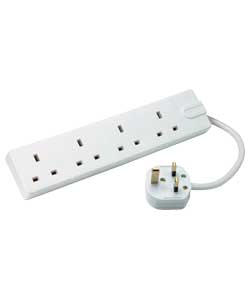Hi
I have been asked to look at some electical issues in my new partners house ( more investigate than cure!!)
first one- bedroom
there seems to be only 2 double sockets in the master bedroom- neither in a usual place. So one socket has a 4way going to the other part of the room, it also has a plug but with flat twin and earth which i presume runs to another socket.
so this leads to 2 questions:
1) why run twin and earth to a socket - would it not be safer to run a 4way extention?
2) could I run a spur of this socket? I seem to remember (years ago) that you could run a spur (single socket?) of a double socket is this still the case ? if so is it per socket on a ring or just one spur per ring?
Next scenario
in the airing cupboard there is powerr to the hot water tank and there is also power ( dropping down from the loft in twin and earth cable 32a rated) to power the power shower unit.
she has asked if there is a way to get power into the loft so that we can put the old clunky pc in the loft as a media server and possibly run a small stereo (seperate issue regarding speakers in the bathroom)
without any investigation ( so please dont flame me) could i tap off fromthe hot water tank power supply? ( dont think i can)
or could i do it fromthe power shower feed? (dont know why but i get the feeling this is on a separate "ring" so may be able to cope with a socket that pulls no more than 4a
.
sorry its loads of questions
I have been asked to look at some electical issues in my new partners house ( more investigate than cure!!)
first one- bedroom
there seems to be only 2 double sockets in the master bedroom- neither in a usual place. So one socket has a 4way going to the other part of the room, it also has a plug but with flat twin and earth which i presume runs to another socket.
so this leads to 2 questions:
1) why run twin and earth to a socket - would it not be safer to run a 4way extention?
2) could I run a spur of this socket? I seem to remember (years ago) that you could run a spur (single socket?) of a double socket is this still the case ? if so is it per socket on a ring or just one spur per ring?
Next scenario
in the airing cupboard there is powerr to the hot water tank and there is also power ( dropping down from the loft in twin and earth cable 32a rated) to power the power shower unit.
she has asked if there is a way to get power into the loft so that we can put the old clunky pc in the loft as a media server and possibly run a small stereo (seperate issue regarding speakers in the bathroom)
without any investigation ( so please dont flame me) could i tap off fromthe hot water tank power supply? ( dont think i can)
or could i do it fromthe power shower feed? (dont know why but i get the feeling this is on a separate "ring" so may be able to cope with a socket that pulls no more than 4a
.
sorry its loads of questions



